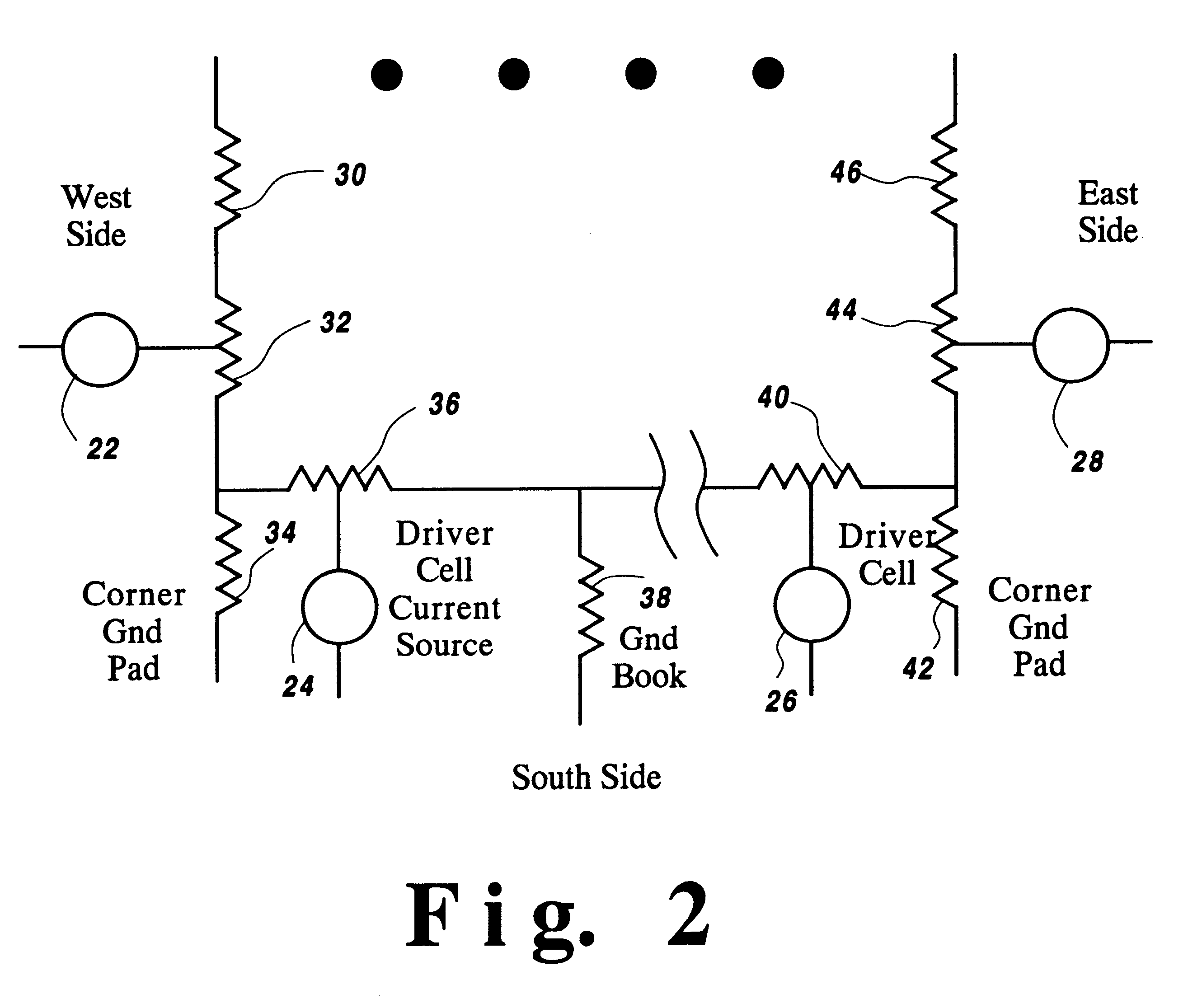Fast method of I/O circuit placement and electrical rule checking
a fast method and circuit technology, applied in the field of analyzing the layout of i/o cells, can solve the problems of limit of placement of different types of i/o cells in the available locations, limit of test circuits, other limits on placement needed
- Summary
- Abstract
- Description
- Claims
- Application Information
AI Technical Summary
Problems solved by technology
Method used
Image
Examples
Embodiment Construction
)
In describing the preferred embodiment of the present invention, reference will be made herein to FIGS. 1-2 of the drawings in which like numbers refer to like features of the invention. Features of the invention are not necessarily shown to scale in the drawings.
In order to understand the method of the present invention, a brief description of the design process is helpful. The present invention is described in connection with the design of a custom ASIC chip, but it is also applicable to design of other integrated circuits.
The ASIC chip designer knows the intended function of the ASIC and from this function is able to determine the required inputs and outputs to the chip at the beginning of the design process. The chip manufacturer provides a library of standard I / O cell types that the ASIC designer may use and a variety of silicon dies which differ in size and suitable packages for those dies on which the ASIC circuit, including the I / O cells, can be constructed. The designer se...
PUM
 Login to View More
Login to View More Abstract
Description
Claims
Application Information
 Login to View More
Login to View More - R&D
- Intellectual Property
- Life Sciences
- Materials
- Tech Scout
- Unparalleled Data Quality
- Higher Quality Content
- 60% Fewer Hallucinations
Browse by: Latest US Patents, China's latest patents, Technical Efficacy Thesaurus, Application Domain, Technology Topic, Popular Technical Reports.
© 2025 PatSnap. All rights reserved.Legal|Privacy policy|Modern Slavery Act Transparency Statement|Sitemap|About US| Contact US: help@patsnap.com



